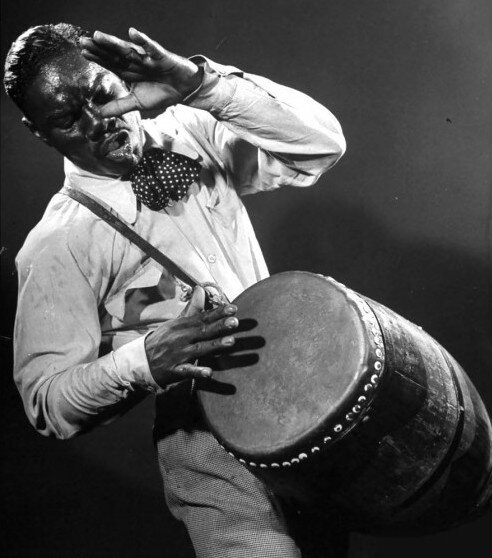Afro-Cuban drumming is one of the richest and most vibrant rhythmic traditions, deeply rooted in various cultures. It evolved at the intersection of Spanish colonial influences and African rhythms, significantly impacting a wide range of musical styles, including son, rumba, Latin jazz, and salsa. This dynamic drumming serves as a powerful symbol of resilience, creativity, and the strength of rhythm in shaping identity and self-expression.
History of Afro-Cuban Drumming
Afro-Cuban drumming is prevalent in enslaved African groups brought to Cuba during the period of the transatlantic slave trade. African groups retained their musical heritage, syncretizing it to new contexts and incorporating it in conjunction with Spanish harmonic traditions and instruments. With time, this syncretism evolved to produce unique Afro-Cuban rhythms that continue to be a fundamental aspect of the island’s musical heritage.
Major African ethnic influences that prevail are:
- Yoruba traditions (Batá drumming in Santería rituals)
- Bantu rhythms (Congo and Makuta)
- Arará rhythms (derived from Dahomey traditions)
These merged with Spanish folk music to supply rhythmical essence of Afro-Cuban drumming.
Major Styles of Afro-Cuban Drumming and Equipment
Afro-Cuban drumming is marked by polyrhythmic sophistication and patterns of call-and-response. Some of its most acclaimed drumming traditions are:
- Batá Drumming
- Used in religious rituals of Santería
- Performed on a set of three Batá drums (Iya, Itotele, Okonkolo)
- Boasts of a highly structured dialogue-rhythm between the three drums
- Rumba
- Secular, folk-oriented style with a heavy African imprint
- Consists of three principal subcategories: Yambú, Guaguancó, and Columbia
- Performed using congas, claves, and palitos (sticks)
- Son Cubano
- Ancestor of salsa and Latin jazz
- Uses bongos, maracas, claves, and bass
- Lives up to its syncopated rhythm, which set up the scene for Latin music in contemporary times
- Comparsa (Carnival Drumming
- Featured in parades and celebrations in streets across Cuba
- Mass ensembles of drummers on congas, cowbells, and bass drums
- High-energy, dancing rhythms that get the crowd moving in sync
Afro-Cuban Drumming’s Global Impact
Afro-Cuban drumming has deeply influenced jazz, rock, funk, and world music. Some of its most notable influences are:
- Latin Jazz – Dizzy Gillespie, Chano Pozo, and Tito Puente introduced Afro-Cuban rhythm to jazz, revolutionizing Latin jazz.
- Salsa: Derived from son’s rhythm structure and rumba’s rhythm, using timbales, congas, and bongos.
- Rock & Funk: Santana introduced Afro-Cuban percussion to rock, funk drummers like Bernard Purdie used Cuban grooves in their style.
- Today, afro-Cuban drummers continue to learn and use Afro-Cuban rhythm in new music, keeping it alive and vibrant.
Afro-Cuban drumming is a resilient fusion of cultures that maintains African and Caribbean musical traditions’ close affiliations. With its complex rhythms, high-energy live performances, and heritage richness, it is a cornerstone of Latin music and a never-ending inspiration to artists across the world. From streets in Havana to international stages, Afro-Cuban drumming is a living, breathing force of rhythm and heritage.
